-
![img]()
Tiny Troubles: An Expert's Tips on Dealing with Dandruff in Kids
Zakwan Shah
November 21, 2024
3 min
At first glance, people might think that’s snow on your child's shoulders. But the itching in their scalp is a sign of something else.
We often think only adults suffer from dandruff, but kids have to deal with them too.
We sat down with Nazatul Amira Hamzah from Primabumi Sdn Bhd to learn more about childhood dandruff and what parents can do to fend off the flakes. Pharmacist Nazatul Amira Hamzah
Pharmacist Nazatul Amira Hamzah
Nazatul is a qualified pharmacist with 10 years of experience in pharmacy practice involving both hospital and community settings.
She currently holds the position of Pharmacist and Key Account Manager at a renowned pharmaceutical company in Kuala Lumpur.
Here’s what a pharmacist has to say about those pesky white flakes.Question 1: My child has been complaining of an itchy scalp with small, white flakes. It doesn’t seem to go away with frequent washing. Can you tell me what this is?
Your child is most likely suffering from dandruff.
The symptoms are pretty common for both adults and children.
White flakes of dead skin on the shoulders and in the hair. Dry and itchy scalp. Rough, red, or crusty patches on the scalp.
These are all tell-tale signs of someone suffering from dandruff.Question 2: I’ve always assumed that dandruff can only happen in adults. Can a child get it too?
Yes. Children can get dandruff, too. The condition is rare in babies, but it can occur in people of all ages.
Dandruff typically appears around puberty or adolescence in children. This happens when oil glands start to become more active.Question 3: What causes dandruff in children?
It takes two ingredients to make dandruff in children.
First is sebum, and the next is fungal overgrowth.
Dandruff is more likely to happen when your child’s scalp produces too much oil or sebum. This is known as seborrhoeic dermatitis.
A type of fungus that grows naturally on human skin known as Malassezia loves to feed on sebum.
When excess sebum is produced, the fungus multiplies.
As a result, the scalp's cells to shed too quickly, causing dry skin and eventually resulting in dandruff.Question 4: Is dandruff contagious?

Fortunately, dandruff is neither harmful nor contagious.
Therefore, your child did not get it from another person be it child or adult.
If they’re suffering from dandruff, they will also not spread the condition to someone else.Question 5: Are dandruff and cradle cap the same?
No, they aren’t. Cradle cap only appears in small children and younger babies, whereas dandruff is typically seen in older children.
Dandruff manifests as dry, flaky, and itchy white flakes only on the scalp.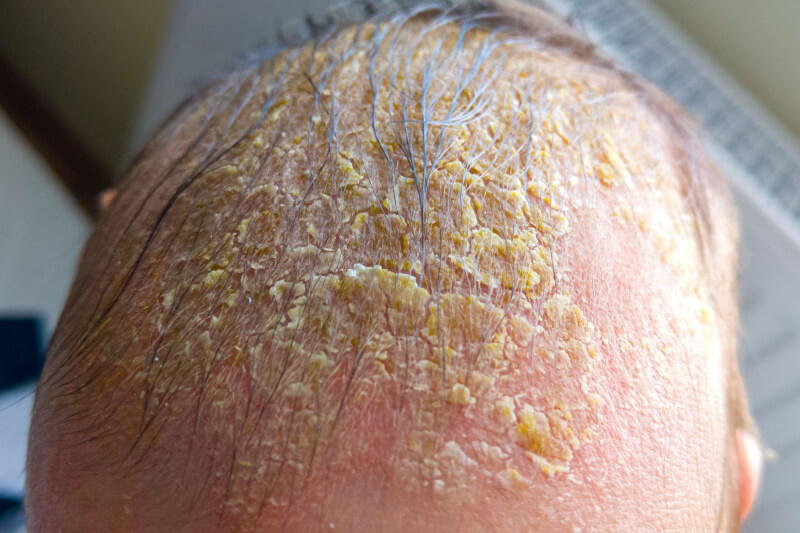
On the other hand, in cradle cap, you might notice greasy, yellowish crusts on your baby's scalp, eyebrows, and nappy area.
Cradle cap requires a different treatment than dandruff.Question 6: How do I get rid of my child’s dandruff?
First, if your child has mild dandruff, make sure you've ruled out any other skin condition.
Then, use a gentle comb to brush away any large flakes of dry skin.
Finally, wash your child's hair with a mild shampoo to remove any excess dry skin flakes that may be lingering on their scalp.
This should hopefully prepare them for a flake-free day.Question 7: I’ve tried the above steps but the dandruff doesn’t seem to go away, and my child keeps on scratching. What should I do?
You can control your child’s dandruff by using a medicated anti-dandruff shampoo. Seek advice from your doctor or pharmacist on which product suits your child’s age.Question 8: After my child’s dandruff completely goes away, is there a chance that it will return?
Yes, unfortunately. Stress, cold and dry air can cause dandruff to return.
Covering the head too often such as when wearing hats or caps, as well as allergies to some hair care products can also possibly triggers a dandruff return.
To make sure recurrence doesn’t happen, make sure your child washes their hair and cleans their scalp regularly.
Get them the right haircare product to help prevent the return of their dandruff.Question 9: When should I bring my child to the doctor?
You’re strongly advised to consult a doctor if your child’s dandruff doesn’t improve after 2 to 3 weeks of treatment.
Another sign that medical attention may be needed is if they also develop thick, scaly patches on their scalp.
Your doctor needs to determine if your child suffers from scalp psoriasis.
Take them to the clinic as well if they keep on scratching their scalp despite treatment. Especially if they start showing red, itchy, and/or flaky skin in areas other than the scalp.
Disclaimer: The information provided in this article is for informational purposes only and should not be considered as medical advice from Motherhood. For any health-related concerns, it is advisable to consult with a qualified healthcare professional or medical practitioner.
For more insightful stories and fun recipes, stay tuned to Motherhood Story!
-
![img]()
Ultimate Guide to Scavenger Hunt for Kids: Engaging Activities for Family Fun
Reginald Chan
January 30, 2024
8 min
Scavenger hunts are more than just a fun way to spend time; they are a gateway to a world of creativity and learning for children. Engaging in these activities entertains kids and serves as a fantastic educational tool, fostering a strong sense of curiosity and problem-solving skills.
Additionally, scavenger hunts are a perfect avenue for family bonding, providing a unique opportunity for parents and children to collaborate and enjoy quality time together.Overview of Scavenger Hunts
Firstly, scavenger hunts are exciting games where participants seek items or complete tasks from a predefined list. Also, they are incredibly beneficial for kids, stimulating creativity, enhancing problem-solving skills, and promoting physical activity.
Such activities are not only fun but also instrumental in child development.A. Types of Scavenger Hunts
1. Indoor Hunts
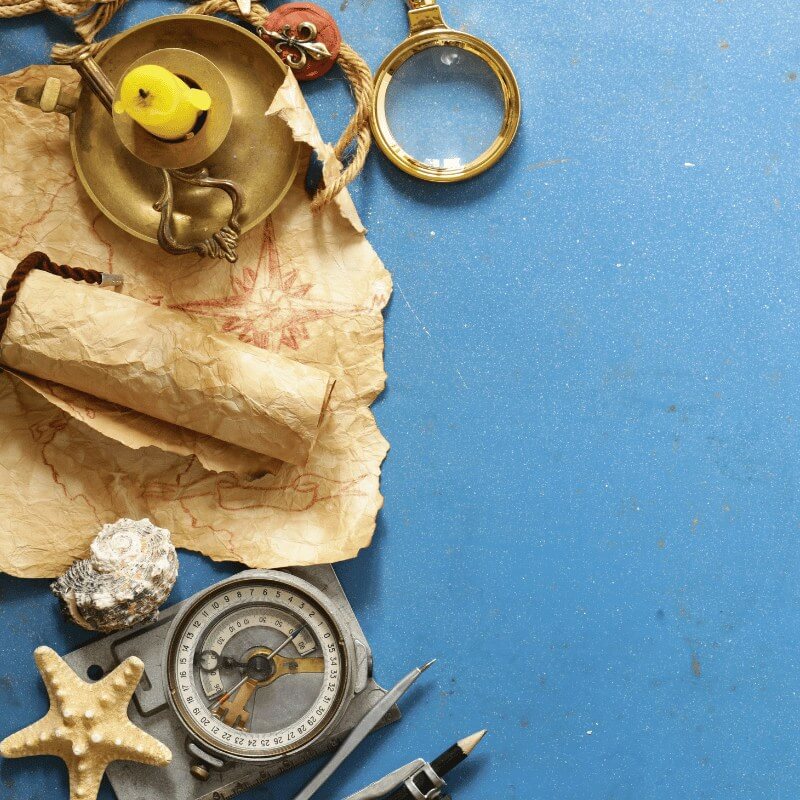
Indoor Scavenger Hunt
Perfect for rainy days, this hunt involves finding common household items. For example, children can search for something "squishy" or "that lights up."
Prepare a list of items in different categories to make the hunt more challenging.
Items you require:- List of household items
- Paper and pen for checklists
Art Scavenger Hunt
Here, encourage creativity by asking kids to draw pictures inspired by items they find indoors. Therefore, parents should provide them with art supplies and a list of objects or themes to base their artwork on.
Items you require:- Art supplies (crayons, markers, paper)
- List of objects or themes for inspiration
Flashlight Scavenger Hunt
Next, this exciting nighttime activity involves using flashlights to find objects hidden in the dark. Safe for indoor play, ensure the area is clear of obstacles to prevent accidents.
Items you require:- Flashlights
- List of items to find
2. Outdoor Hunts

Backyard Insect Scavenger Hunt
This nature-based hunt is perfect for outdoor exploration. Kids can search for various insects, enhancing their understanding of biology. Provide them with a magnifying glass and a list of common backyard insects to find.
Items you require:- Magnifying glass
- Checklist of common backyard insects
- Container for collecting insects (optional)
Nature Scavenger Hunt
Ideal for family hikes, this hunt involves spotting natural elements like leaves, rocks, or birds. Equip kids with a checklist and a camera to capture what they find.
Items you require:- Nature items checklist
- Camera or smartphone for taking pictures
Zoo Scavenger Hunt
A visit to the zoo can be educational with a scavenger hunt. Children can look for different animals, learning about their habitats and behaviours. Prepare a list of animals and a map of the zoo for guidance.
Items you require:- Zoo animal checklist
- Zoo map
- Camera or smartphone (optional)
3. Educational Hunts

Phonics Scavenger Hunt
Focus on literacy by having kids hunt for letters and create words. Prepare cards with letters and place them around the house or yard.
Items you require:- Letter cards
- Pen and paper for word creation
Number Hunt
Reinforce early math concepts by finding objects in a sequence. Use number cards and hide them for kids to find and arrange in order.
Items you require:- Number cards
- Space to hide the cards
Colour Wheel Scavenger Hunt
Teach colour theory by having kids find items that match each colour on a colour wheel. This can be done both indoors and outdoors.
Items you require:- Color wheel chart
- List of items corresponding to each colour
B. Age-Appropriate Ideas
For Toddlers

Colour Scavenger Hunt
Suitable for toddlers, this hunt involves finding objects of different colours. As it is simple and educational, it helps in colour recognition.
Items you require:- List of colours to find
- Bags or containers for collection
Shape Scavenger Hunt
Next, this scavenger hunt idea helps toddlers identify shapes by finding house items matching various shapes. Simple and easy, especially for the younger ones.
Items you require:- List of shapes to find
- Shape reference chart (optional)
For Preschoolers

Alphabet Bug Scavenger Hunt
If you have preschoolers, this is an excellent game idea. Combine learning with fun by having preschoolers identify upper and lower case letters with a bug theme.
Items you require:- Alphabet bug cards or images
- Checklist of letters
Five Senses Scavenger Hunt
Additionally, you can engage all five senses by finding items associated with sight, sound, touch, taste, and smell. This form of scavenger hunt idea will keep the preschooler occupied for a long time!
Items you require:- List of items for each of the five senses
For School-Aged Children

Secret Code Scavenger Hunt
How about older kids?
Older kids can enjoy deciphering a secret code to find the next clue. To play this game, you only need to prepare a simple cypher and clues for them to solve.
Additionally, you may also increase the difficulty levels once they get a hang of it.
Items you require:- Secret code cypher
- Clue cards
- Decoder sheet
Reading Scavenger Hunt
Another interesting scavenger hunt idea—this is geared to enhance reading skills by finding books or topics related to various tips.
To get started, parents can read a sentence or two, such as Jack & the Beanstalk, and afterwards, allow the kids to head over to the garden to perform the hunt for related items.
Items you require:- Reading list or tips
- Books or materials related to prompts
4. Interactive and Inclusive Activities

Making it Interactive
Movement Scavenger Hunt
Are you having active kids at home?
By incorporating physical activities like jumping, crawling, or skipping into the hunt, you can make the hunt more dynamic and fun.
Make sure you select sufficient spaces for movement activities, such as the living room or the nearby field.
Items you require:- List of physical activities (jumping, crawling, etc.)
- Space for movement activities
Photo Scavenger Hunt
Besides that, a photo scavenger hunt can be a very fun game to play with the family. By leveraging the power of technology, allow your kids to take photos of the items they find.
The photos can then be printed out for other arts and crafts activities.
Items you require:- Camera or smartphone
- List of items or scenes to photograph
5. Seasonal and Themed Hunts

Seasonal Hunts
Festive Scavenger Hunt
As Malaysia is a multinational country, we can incorporate many festivals and events in our scavenger hunt activities. For example, searching for gold-coloured toys or red packets during Chinese New Year.
Items you require:- Festival items or decorations
- Drawing or samples of the 'treasures'
Themed Hunts
Pirate Scavenger Hunt
Are you looking for fun ideas for the kids?
Look no further with a pirate-themed scavenger hunt.
To start, create a pirate-themed hunt with a treasure map and clues leading to a hidden 'treasure box'. Think out of the box and make sure
Items you require:- Treasure map
- Clues leading to 'treasure'
- Props for pirate theme (eyepatches, hats)
Space Scavenger Hunt
Besides that, introducing the scape scavenger hunt for kids. A space-themed hunt can include finding items or performing tasks related to planets, stars, or astronauts.
Depending on the kids' age, you can use different types of space-related props or even a telescope (if at night). This fun activity encourages curiosity in kids and makes learning fun.Items you require:
- Space-themed checklist (planets, stars, astronauts)
- Space-related props or images
6. Family and Community Engagement

Mandala Scavenger Hunt
What is a mandala scavenger hunt?
This hunting activity involves the whole family collecting items like leaves, stones, and flowers to create a mandala.
What is a mandala? A mandala is a geometric configuration of symbols.
This can also be extended to the community, with each family contributing to a larger mandala.Items you require:
- List of natural items (leaves, stones, flowers)
- Central location for mandala creation
Football Scavenger Hunt
Last but not least, organising a fun family activity such as a scavenger hunt for football-related items would be a fun-filled activity for both kids and adults.
This scavenger hunt is easy to start with, and in most cases, it can be done both indoors and outdoors.Items you require:
- Football-related items checklist
- Props or decorations related to football
Preparation and Safety Tips for Scavenger Hunts with Kids
Gather essential items based on your chosen theme to kick-start your scavenger hunt. Preparing the items ahead of time will give you ample time to prepare and avoid any last-minute changes.
Next, meticulously set up the environment. Parents should ensure it's safe and suitable for the children's age group.
Also, arrange items or clues thoughtfully, keeping in mind accessibility for all participants, especially younger kids. Here are several other important tips to keep in mind.Indoor Safety
Firstly, make the indoor play area as safe as possible. Remove any potential hazards and establish clear boundaries for the hunt. This proactive approach ensures kids can enjoy the activity without any risks.Outdoor Safety
Also, when heading outdoors, safety becomes paramount. Check the area for security and ensure kids are dressed for the weather. Always have an adult supervise to handle any unforeseen situations.Visual Aids
Especially for non-verbal or younger children, use visual clues or picture-based lists. These aids can make the activity more inclusive and engaging for all kids.Simplified Tasks
Finally, customize the complexity of tasks to align with the children's abilities. This personalization ensures every child can participate fully and enjoy the scavenger hunt experience.Conclusion
Scavenger hunts are a versatile, fun way to engage children in educational and physical activities. They offer endless opportunities for creativity and learning, providing a unique platform for family bonding and community involvement.
Therefore, parents are encouraged to use these ideas as a starting point and tailor them to their family's interests and needs.
Disclaimer: The information provided in this article is for informational purposes only and should not be considered as medical advice from Motherhood. For any health-related concerns, it is advisable to consult with a qualified healthcare professional or medical practitioner.
For more insightful stories and fun recipes, stay tuned to Motherhood Story!
-
![img]()
Guarding Young Smiles: A Parent's Guide to Combating Cavities in Kids
Reginald Chan
January 29, 2024
4 min
Cavities in kids are more than just a dental issue; they're a common challenge that can impact overall health and well-being.
Understanding the causes and knowing how to prevent and treat them is crucial for every parent. This guide offers comprehensive insights into tackling this cavities in kids issue.The Three Main Causes of Cavities in Kids

Sugar Consumption
The frequent intake of sugary foods and beverages creates an acidic environment in the mouth, which accelerates tooth decay. Bacteria feed on these sugars, producing acids that erode tooth enamel.
Encouraging kids to rinse their mouths or drink water after consuming sweets can minimize this risk.Poor Oral Hygiene

Without regular brushing and flossing, plaque builds up on teeth. This plaque harbours harmful bacteria that contribute to cavity formation.
Teaching children proper brushing techniques and ensuring they brush for at least two minutes can significantly reduce plaque buildup.Genetic Factors
Some children are naturally more prone to cavities due to genetic factors like tooth structure or saliva composition.
In these cases, extra preventive measures and more frequent dental check-ups can be beneficial.The Three Treatments for Cavities in Kids

Fillings
When a cavity is detected, the decayed portion of the tooth is removed and replaced with a filling. This process not only restores the tooth's structure but also prevents further decay.
Regular check-ups can help in early detection, making fillings a simpler and less invasive procedure.Crowns

For severe cases of decay or weakened teeth, dental crowns are used. They act as a cap, covering the entire tooth, thereby protecting it from further decay and restoring its functionality.
Pediatric crowns are often made from durable materials suited for children.Fluoride Treatments
Fluoride strengthens the tooth enamel and can help reverse early signs of decay. Professional fluoride treatments at a dental office are more potent than over-the-counter fluoride toothpaste and mouthwashes, making them an effective tool against cavities.10 Ways Parents Can Help Prevent Cavities in Kids

Encourage Regular Brushing
Teach your child to brush their teeth for two minutes, twice a day, using a soft-bristled toothbrush and fluoride toothpaste. This helps remove plaque, a sticky film of bacteria and reduces the risk of cavities.
For younger children, you can turn brushing into a game or story to make it more engaging.
Side note: I'm a huge fan of the Owl from Flipper Toothbrush. Made in Malaysia, it has a timer display with a cute animal design.Flossing Daily
Start flossing your child's teeth daily as soon as two teeth touch each other. This removes plaque and food particles from between the teeth and under the gumline, areas a toothbrush can't reach.
You should take the opportunity to show them how to gently insert the floss between their teeth and move it up and down.Healthy Eating Habits
Encourage your child to eat a balanced diet that limits sugary snacks and drinks. Foods rich in calcium and phosphates, like cheese and nuts, help remineralize tooth enamel.
Put some fun into the kitchen and allow the kids to provide recommendations on their next meal.
Additionally, involving children in choosing and preparing healthy meals can make them more interested in eating them.Regular Dental Check-ups

Schedule dental check-ups every six months. These visits are crucial for cleaning teeth professionally and catching any dental issues early.
They also give you the opportunity to discuss your child's specific dental needs with the dentist.Dental Sealants
Ask your dentist about applying sealants on your child's permanent molars. Sealants are a thin, protective coating that adheres to the chewing surface of the back teeth, preventing cavities by shielding them against bacteria and plaque.Educating Children
Use age-appropriate books, apps, or videos to educate your children about dental health. This makes the learning process fun and engaging. Understanding the importance of good oral hygiene can motivate children to take care of their teeth.Limiting Snacking
Reduce frequent snacking, especially on sugary and acidic foods, to decrease the risk of cavities. Teach your child to rinse their mouth with water after snacks if brushing isn't possible.
This helps to wash away food particles and neutralize harmful acids.Fluoride Use

Use an appropriate amount of fluoride toothpaste for your child's age. A rice-sized amount is recommended for children under three and a pea-sized amount for those aged three to six.
Proper use of fluoride strengthens the tooth enamel, making it more resistant to decay.
Just make sure you educate them on the importance of not swallowing the toothpaste.Bottle Weaning
Gradually wean your child off the bottle, especially at bedtime, to avoid prolonged exposure to liquids that can cause tooth decay. Introduce a sippy cup as an alternative.
This helps prevent "bottle caries," a common problem in young children.Monitoring and Guidance
Supervise your child's brushing and flossing until they develop good oral hygiene habits. This not only ensures they're cleaning their teeth effectively but also instils a lifelong commitment to dental health.
Positive reinforcement for good habits can be very motivating.
By following these guidelines, parents can play a pivotal role in preventing cavities and promoting oral health in their children. Each step is a building block in establishing a strong foundation for a lifetime of healthy smiles.Summary: Treating Cavities in Kids
In conclusion, the journey to safeguarding your child's dental health is a collaborative and continuous one, involving regular dental practices and mindful lifestyle choices.
By instilling good oral hygiene habits, making informed decisions about diet and dental care, and staying vigilant about regular dental check-ups, parents can significantly reduce the risk of cavities in their children.
This proactive approach not only ensures healthier teeth and gums but also instils lifelong habits for overall well-being.
Remember, every small step taken today contributes to a lifetime of healthy smiles for your child.
Disclaimer: The information provided in this article is for informational purposes only and should not be considered as medical advice from Motherhood. For any health-related concerns, it is advisable to consult with a qualified healthcare professional or medical practitioner.
For more insightful stories and fun recipes, stay tuned to Motherhood Story!
-
![img]()
Malaysian Kids & Chores: Ditch the Bribes, Grow Teamwork and Responsibility
Sarah
January 30, 2024
5 min
Chores and allowance are both important for kids.
It can be said as part and parcel of parenting, in a way.
Because our children will learn the value of responsibility from both.
But the two should not be tied together.
Read on to discover the reasons why doing so may not be wise.Happy Helpers: Chores for Life Skills & Fun

First, let’s talk a bit about chores.
These tasks can be tedious and time-consuming, but they are necessary for a household to run efficiently.
It may be challenging to persist in having your kids do chores, but they will benefit from the experience.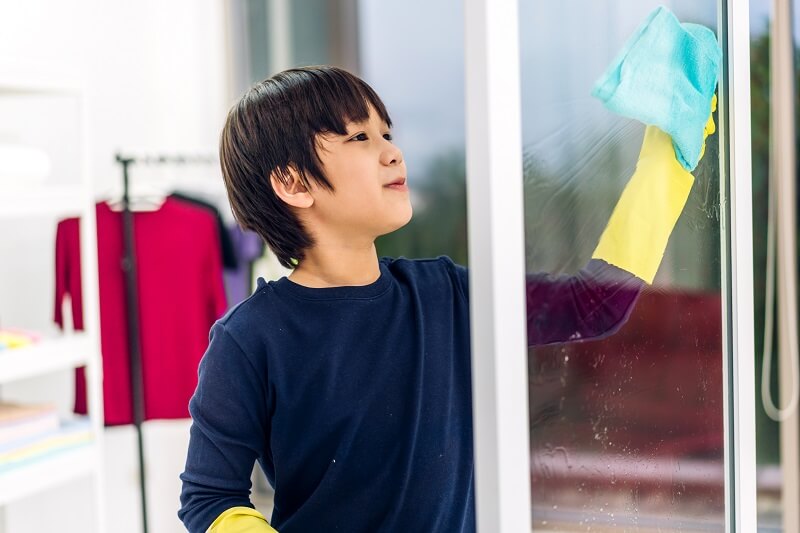
Here’s why your children should help out with age-appropriate chores around the house:- Chores teach life skills. Schools don't teach your kids everything; some lessons, like life skills, begin at home.
- Learns responsibility and self-reliance. Holding them accountable for their regular chores can help them become more self-reliant while teaching responsibility.
- Reinforces respect. They may be more respectful of the work that goes into maintaining a home after experiencing it for themselves.

- Family bonding time. Chores can actually create special moments between children and adults. Little helpers will feel significant and receive a self-esteem boost, while older ones may open up more over a common activity.
- Instils the importance of teamwork. Your kids can develop strong teamwork skills as they learn that family members are accountable to each other and that there are consequences when each other’s expectations aren’t met.
- Improves planning and time management skills. Juggling between schoolwork and housework helps them learn to set priorities and manage their time.
Pocket Money Magic: Teach Financial Smarts with Allowance (Not Bribes)

Now, let’s discuss allowance.
It’s important to note that chores and allowances should be separate.
An allowance is a weekly stipend to teach kids about financial literacy.
It should not be used as an incentive to do what they must learn in life.
Giving kids an allowance is a tried-and-true technique for introducing children to financial responsibility and independence.
Your children will gain basic cash management skills, like saving and budgeting.
It is a key tool if we want to help children develop skills in ethical, creative, and entrepreneurial approaches to money.
When establishing an allowance, always remember the three S's: spending, saving, and sharing.
Teach your children to practice the notion of spending only a portion of their money. Save some for a future purpose and share a sliver by donating.
This is a brilliant method for them to learn the three most essential things they can do with their cash.
And it’s an important life lesson.Ditch the Ringgit, Embrace Teamwork: Chores Are Family Time, Not Jobs!
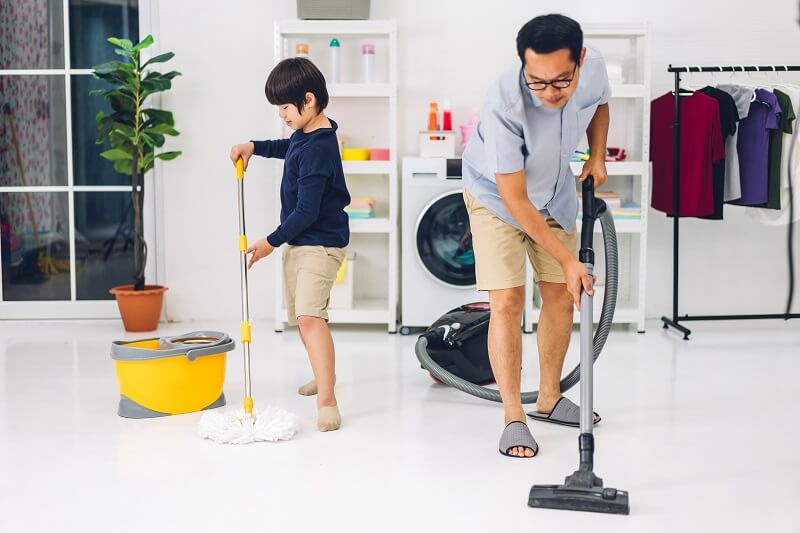
In some households, the line between allowance and chores may become blurred.
This is when parents or caregivers only give out allowances if their children complete chores (or for some, satisfactorily).
It stems from the idea that by paying their kids to help out, it encourages them to appreciate the value of hard-earned money more.
In some ways, this notion is not completely unfounded.
However, it also leaves room for the possibility of them not complying—when it shouldn’t be an option.
Rewards often only buy temporary compliance because they are dependent on a child's willingness to work for the prize.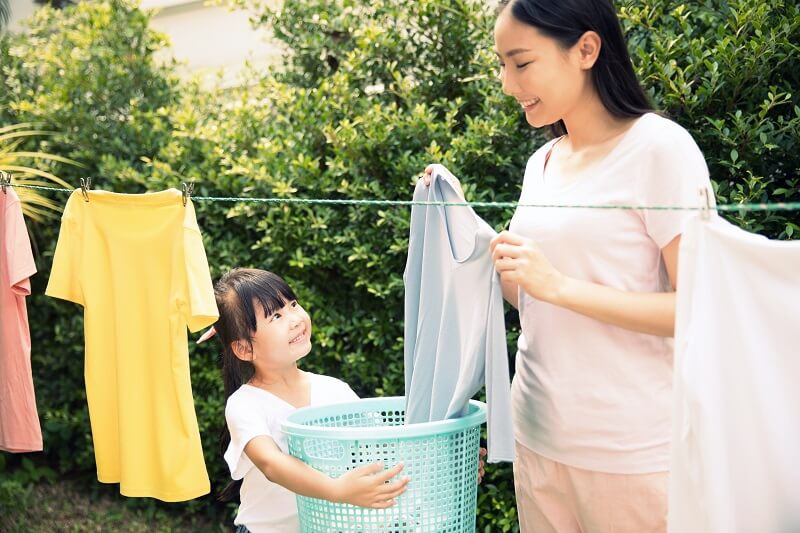
Chores can teach children imperative life skills.
Hence, it ought to be cultured regardless of any monetary reward or lack thereof.
Kids should not be raised believing good behaviour—or the willingness to pull their own weight—has to be bought.
Household chores should be every family member’s responsibility.
So if you’re part of the unit, it comes together. Everyone plays a role in helping out.
Teaching kids such responsibility at home with daily age-appropriate chores is nurturing the right attitude for the future.Family to Future: The Joy of Contribution

There are other ways for our kids to earn or receive financial compensation.
So, let's avoid making their allowance tied to the household upkeep.
The benefit of seeing chores as learning tools is that your children will also learn to do their chores satisfactorily.
This stems from the sense of accomplishment and pride they can get from their completion.
So, forget any monetary amount.
Positive self-esteem and the belief that money isn’t everything will be much more important to your children’s happiness.Building Responsible Kids: Start with Chores, Not Ringgit Rewards
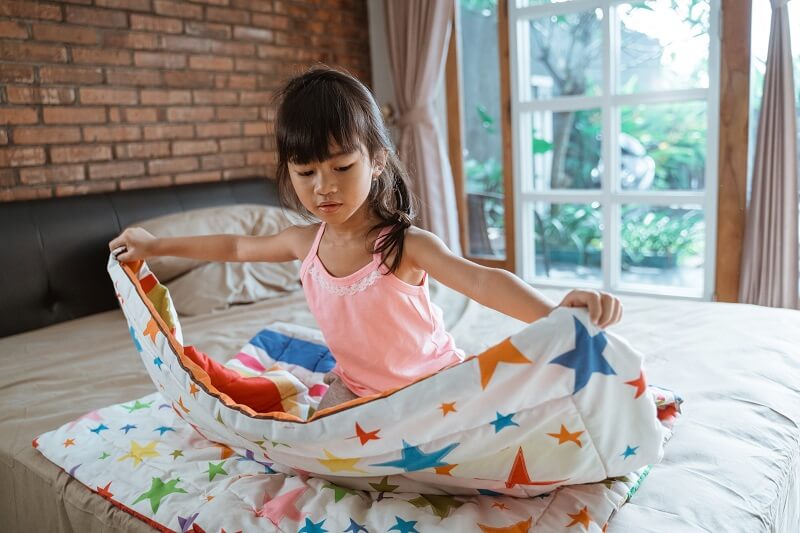
Rewards may not work long-term.
For one, it can hinder the improvement of your children’s learning.
It may also breed entitlement and thus be difficult to set boundaries.
On top of that, rewards decrease intrinsic motivation.
Of course, it’s important for our kids to understand the value of money.
But we don’t want them to think that everything they do should have a monetary value.
So, eliminate money from the equation when assigning your child chores.
This allows them to see that everyone contributes equally to the household.
It’s not a job, nor about figuring out which tasks are or aren’t worth it.
It is merely something that has to be done as a member of the family—helping their family home run smoothly and well.
Disclaimer: The information provided in this article is for informational purposes only and should not be considered as medical advice from Motherhood. For any health-related concerns, it is advisable to consult with a qualified healthcare professional or medical practitioner.
For more insightful stories and fun recipes, stay tuned to Motherhood Story!
-
![img]()
Beyond Pastime: The Powerful Benefits of Hobbies for Kids
Reginald Chan
January 28, 2024
4 min
Have you ever wondered how your child's activities after school can shape their future? Hobbies, often seen as mere pastimes, play a pivotal role in the development of children.
In this article, we look deeper into the benefits of hobbies for kids, sharing and highlighting why these activities are more than just ways to pass the time.
More importantly, these are simple and easy hobbies that your kids would definitely love.Why Hobbies Matter for Children?

Hobbies are not just a means to keep your child occupied. They are gateways to learning and growth. Engaging in hobbies helps children develop new skills, boosts their creativity, and allows them to explore their interests.
In a world where academic pressures can be overwhelming, hobbies offer a much-needed respite and a chance for children to express themselves freely.5 Powerful Benefits of Hobbies for Kids

Emotional Development
Hobbies provide a unique avenue for children to explore and express their emotions. Activities like painting or creative writing allow them to articulate feelings they might not be able to verbalize.
This emotional outlet is crucial for mental health and developing coping mechanisms. Parents can encourage this by providing a safe and supportive environment where children feel free to express themselves through their hobbies.Cognitive Skills
Engaging in hobbies such as chess, coding, or even complex building sets challenges the brain, enhancing cognitive abilities.
These activities improve critical thinking and problem-solving and can even boost academic performance. Parents can support cognitive development by choosing age-appropriate and intellectually stimulating hobbies and participating in these activities with their children.Physical Health
Physical hobbies like sports, dance, or hiking promote fitness, improve motor skills, and instil a habit of physical activity from a young age. These activities are essential for healthy physical development and preventing childhood obesity.
Parents can encourage physical hobbies by being active participants or facilitators, ensuring children have the necessary equipment and opportunities to engage in these activities.Social Skills
Group hobbies, such as team sports, music bands, or art classes, provide vital opportunities for children to interact with peers, learn teamwork, and develop social skills.
These interactions are crucial for building communication skills and empathy. Parents can help by enrolling their children in group activities and encouraging them to collaborate and interact with their peers.Building Self-Esteem and Confidence
As children progress and achieve milestones in their hobbies, they build self-esteem and confidence.
Whether mastering a new song on the piano or scoring a goal, these achievements make children feel capable and proud. Parents can bolster this by recognizing and celebrating these achievements, no matter how small.Top Hobbies for Kids and Their Unique Benefits
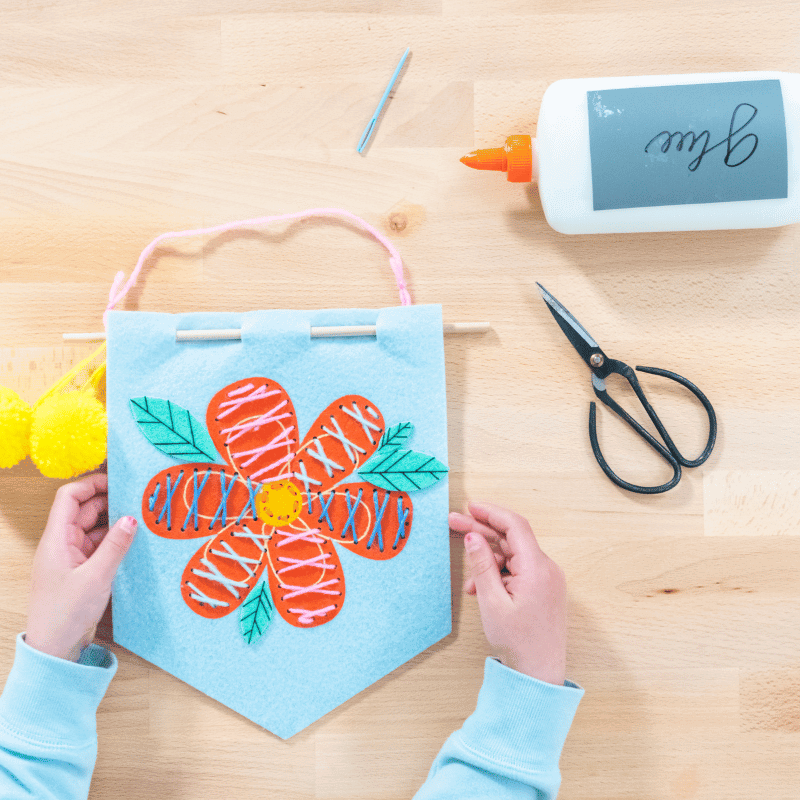
Artistic Hobbies (Drawing, Painting)
These hobbies not only allow children to express their creativity but also improve their hand-eye coordination and fine motor skills.
Also, they can be a form of non-verbal communication and self-expression. Parents can encourage these hobbies by providing art supplies and showing genuine interest in their children's creations.Musical Hobbies (Playing Instruments)
Learning to play an instrument can enhance memory, coordination, and reading skills. It also provides an emotional outlet and can be a source of joy and relaxation.
Besides that, parents can support their children's musical interests by arranging lessons, attending their performances, and encouraging regular practice.Sports (Badminton, Football)
Participating in sports teaches children about teamwork, discipline, and resilience. It also provides essential physical exercise.
Here, parents can play a crucial role by attending games, providing moral support, and helping children balance sports with their academic responsibilities.Reading and Storytelling
These activities are fundamental in developing language skills and fostering imagination.
At the same time, they can also be a gateway to other cultures and ideas. Parents can encourage these hobbies by reading with their children, visiting libraries together, and discussing books.Gardening
Additionally, gardening is a peaceful hobby that teaches responsibility and patience. It also provides practical lessons in biology and ecology.
Hence, parents can support this hobby by giving children their own space to garden and helping them learn about different plants and gardening techniques.Cooking and Baking
These activities enhance understanding of math (through measurements), science (understanding chemical reactions), and nutrition. Thus, they also foster a sense of accomplishment.
Parents can encourage this by involving children in meal planning and preparation and making cooking a fun family activity.
Also, this can be a great family bonding time for the weekends and holidays.Puzzle and Board Games
These games improve problem-solving skills and strategic thinking. They also offer opportunities for family bonding.
Parents can encourage these hobbies by setting aside time for such games and choosing age-appropriate challenges.Coding and Robotics
These modern hobbies develop logical thinking and technical skills.
They are also great for fostering creativity and innovation.
Here, parents can support these interests by enrolling children in coding classes or workshops and providing access to necessary technology.Traditional Crafts (e.g., Batik Painting)
Additionally, engaging in traditional crafts helps children connect with their cultural heritage while also developing fine motor skills and creativity.
Also, parents can encourage this by enrolling children in workshops and displaying their crafts at home.Volunteering/Community Service
Finally, these activities develop empathy, social responsibility, and a sense of community.
At the same time, parents can support these hobbies by participating in community service activities as a family and helping children find causes they are passionate about.Summary: Benefits of Hobbies for Kids
In summary, in each of these hobbies, parental involvement and support play a crucial role in helping children explore and benefit from their chosen activities.
Therefore, by being actively involved and showing interest in their hobbies, parents can significantly enhance the positive impact of these activities on their child's development.
Disclaimer: The information provided in this article is for informational purposes only and should not be considered as medical advice from Motherhood. For any health-related concerns, it is advisable to consult with a qualified healthcare professional or medical practitioner.
For more insightful stories and fun recipes, stay tuned to Motherhood Story!
Navigation
Our menu boxes are very flexible and easy to use




